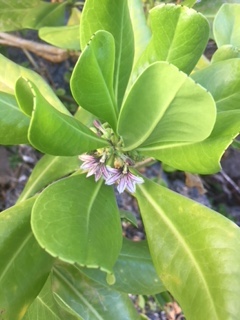Build your own rain garden and help our environment too! As excess rain water washes over streets, parking lots and lawns, it can pick up and carry many items and pollutants itno our rivers and oceans, leading to water pollution and unhealthy coral reefs. Rain gardens are important because they increase the amount of rain water that recharges to ground water, reducing flooding and erosion problems.
Rain gardens filter pollutants from rain water that washes off roofs, lawns, and paved areas, They also provide an attractive habitat for birds, butterflies, and beneficial worms and insects.
Rain gardens are specifically designed to soak up rain water, from roofs, driveways, and patios. Rain gardens look like regular flower gardens but they are so much more. When it rains, the garden fills with a few inches of water and allows the water to slowly filter into the ground rather than running off to the storm drains. This allows 30% more water to soak into the ground than regular grass lawns.
Reflection Instruction:
In order to earn service learning hours, a reflection needs to be turned in to a teacher who can input the hours into Power School. You need to address: What did you do? What did you learn? How was this an example of public service?
Learning Standards/Objectives:
By doing this project, students will learn principles of ecology and how one can help the natural environment thrive.
Standard 2: Life Science
Students understand the diversity and unity of living organisms, the living environment, and principles of ecology.
BI.2.30 Recognize and describe how human beings are part of Earth’s ecosystems and that human activities can,deliberately or inadvertently, alter the equilibrium in ecosystems.
BI.2.31 Understand and describe how organisms are influenced by a particular combination of living and nonliving components of the environment.
BI.2.32 Recognize and describe how the physical or chemical environment may influence the rate, extent, and nature ofthe way organisms develop within ecosystems.
Organization/Agency/Business Name: Kurason Isengsong - Island Girl Power










